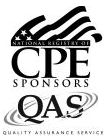Effective Sales Management (CPE Course)
CPE Credit: 11 hours
Course Type: Downloaded PDF materials with online test
Price (with PDF Textbook): $75
Course Description
The sales department must obtain orders from customers as cost-effectively as possible, or else an organization will soon go out of business. In the Effective Sales Management course, we describe every aspect of how to run the department. Topics covered include sales strategy, managing sales opportunities, organizing the department, motivational techniques, salesperson compensation systems, sales forecasting, and the best metrics for the department.
Author: Steven Bragg
Course Number: BM1018
Table of Contents
Chapter 1. The Selling Environment
Chapter 2. Sales Strategy
Chapter 3. Managing Sales Opportunities
Chapter 4. Account Management
Chapter 5. Organizing the Sales Department
Chapter 6. Salesperson Recruiting and Hiring
Chapter 7. Salesperson Training
Chapter 8. Sales Department Leadership
Chapter 9. Motivational Techniques
Chapter 10. Salesperson Compensation
Chapter 11. Salesperson Performance Evaluation
Chapter 12. Sales Forecasting
Chapter 13. The Sales and Marketing Budget
Chapter 14. Sales Metrics
Learning Objectives
Identify the responsibilities of the sales staff and sales manager.
Specify the selling challenges in today’s business environment.
Describe the traits of a good salesperson.
Identify the situations in which it makes sense to recruit salespeople from competitors.
Specify the different types of sales strategies.
Identify the contents of a go-to-market plan.
Recall the best possible customers for an in-house sales staff.
Specify the circumstances under which sales teams should be used.
Describe how to grow the customer base.
Specify how to calculate the average cost of a sales call.
Specify how up-selling and cross-selling are used.
Recall the different types of purchases that a customer may make.
Recall how a buying center operates.
Specify how an internal advocate should be used.
Identify the characteristics of an effective sales organization.
Recall the situations in which independent sales agents should be used.
Recall the process for developing a salesperson job description.
Specify how to refine the recruiting for salespeople.
Identify how to make salesperson candidates remove themselves from a job selection.
Recall the different types of training that can be applied to the sales force.
Specify the various steps in the training cycle.
Identify the nature of the spacing effect in training.
Recall the advantages and disadvantages of centralized training.
Specify the differences between leadership and management.
Identify the characteristics of someone with a high level of emotional intelligence.
Recall the actions that may be taken to enhance a leader’s credibility.
Specify the strengths and weaknesses of traits analysis.
Identify the events normally included in a coaching session.
Recall the characteristics of a sales quota.
Specify the characteristics of an incentive system.
Identify the characteristics of a bonus payment.
Recall the nature of a house account.
Specify the characteristics of a 360-degree appraisal.
Identify the issues with using growth patterns to forecast sales.
State when forecasting based on customer spending works best.
Recall the issues with the development of sales forecasts from customer surveys.
Specify when to use an extrapolated forecast.
Identify when to use a smoothing constant when creating a sales forecast.
Recall when to use a moving average forecasting method.
Specify the meaning of a correlation coefficient.
Identify the causes of a change in revenues.
Recall when to use a sales budget that is structured by sales territory.
Specify how pacing can be applied to the development of a sales budget.
Identify the different metrics that can be used to assess the activities of the sales department.
Level: Overview
Instructional Method: QAS Self-Study
NASBA Category: Business Management & Organization
Prerequisites: None
Advance Preparation: None
Latest Review Date: June 2023
Program Registration Requirements: Click on "Purchase Course" near the top of this page to pay for and access the course. You will then be able to download the course as a PDF file, then take an on-line examination, and then download a certificate of completion if you pass the examination.
Program Refund Policy: For more information regarding administrative policies concerning complaints, refunds, and other matters, see our policies page.
AccountingTools, Inc. is registered with the National Association of State Boards of Accountancy (NASBA) as a sponsor of continuing professional education on the National Registry of CPE Sponsors. State boards of accountancy have the final authority on the acceptance of individual courses for CPE credit. Complaints regarding registered sponsors may be submitted to the National Registry of CPE Sponsors through its website: www.nasbaregistry.org.
The NASBA sponsor identification number for Accountingtools, Inc. is 115881.
AccountingTools is an IRS Approved Continuing Education Provider. We are compliant with the requirements for continuing education providers (as described in sections 10.6 and 10.9 of the Department of Treasury’s Circular No. 230 and in other IRS guidance, forms, and instructions). Our IRS Approved Continuing Education Provider number is 72821.


